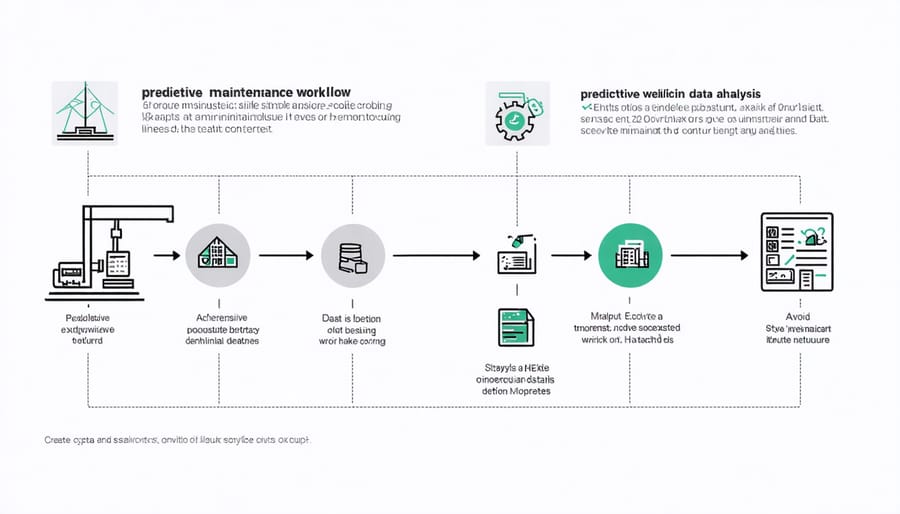Real-Time Solar Analytics: How Smart Data Drives Maximum Panel Performance

In today’s data-driven world, real-time analytics transforms raw information into immediate, actionable insights that can make or break business decisions. Every second, organizations generate massive amounts of data through IoT devices, customer interactions, and operational processes. The ability to analyze this data stream instantly, rather than relying on historical reports, has become a crucial competitive advantage.
Real-time data analytics represents a paradigm shift from traditional batch processing to continuous analysis, enabling businesses to detect patterns, identify anomalies, and respond to opportunities or threats as they emerge. This technology has revolutionized industries from manufacturing to financial services, where split-second decisions can impact millions in revenue or prevent critical system failures.
For European businesses particularly, real-time analytics has become essential in meeting stringent regulatory requirements while optimizing operations for sustainability and efficiency. Modern organizations leverage this technology to monitor energy consumption, predict maintenance needs, and ensure compliance with environmental standards – all in real-time.
The transformation from reactive to proactive decision-making through real-time analytics isn’t just a technological upgrade; it’s a strategic imperative that defines the future of business intelligence and operational excellence.
The Power of Real-Time Solar Monitoring
Key Performance Metrics
In modern solar installations, monitoring key performance metrics provides essential insights for optimization and maintenance. The most crucial parameters include power output (measured in kilowatts), energy yield (tracked in kilowatt-hours), and system efficiency percentage. These metrics are complemented by real-time weather impact analysis to understand environmental influences on performance.
Performance ratio (PR) serves as a quality indicator, showing how effectively the system converts available solar radiation into usable electricity. Inverter efficiency metrics track the conversion rate from DC to AC power, typically aiming for values above 97%. System availability percentage indicates reliable operation time, with optimal systems maintaining above 99% uptime.
Temperature coefficients and panel degradation rates are monitored to ensure long-term performance stability. Financial metrics, including energy cost savings and return on investment calculations, provide tangible business benefits. Advanced monitoring systems also track grid interaction metrics for systems with storage capabilities, measuring self-consumption rates and grid feed-in volumes.
These metrics, when properly analyzed, enable proactive maintenance and system optimization, ultimately maximizing the investment value of solar installations.

Data Collection Technologies
Modern solar installations rely on a sophisticated network of sensors and monitoring devices that work together to collect real-time performance data. These technologies include pyranometers for measuring solar irradiance, smart inverters with built-in monitoring capabilities, and advanced weather stations that track environmental conditions affecting solar production.
String-level monitoring devices measure the performance of individual solar panel groups, while sophisticated power optimizers track the output of each panel independently. Temperature sensors mounted on panels and ambient temperature monitors provide crucial thermal performance data, enabling systems to detect and respond to overheating issues promptly.
Smart energy meters with bi-directional communication capabilities track energy flow between the solar system and the grid, while advanced data loggers collect and temporarily store information before transmission to cloud-based analytics platforms. Many modern installations also incorporate IoT-enabled sensors that monitor system components’ health, detecting potential maintenance issues before they affect performance.
These data collection systems typically communicate through secure wireless networks or ethernet connections, ensuring continuous data flow even in challenging weather conditions. The integration of these technologies enables system owners to maintain optimal performance while providing valuable insights for predictive maintenance and system optimization.

Turning Data into Performance Gains
Immediate Issue Detection
Real-time data analytics revolutionizes how solar installations detect and respond to performance issues. Through continuous monitoring of key parameters such as power output, voltage levels, and inverter efficiency, the system instantly identifies deviations from expected performance patterns. This immediate detection capability ensures that even minor issues are caught before they develop into significant problems.
Advanced monitoring platforms employ sophisticated algorithms that analyze multiple data streams simultaneously. When parameters fall outside predetermined thresholds, the system automatically generates alerts, notifying system operators or property owners through various channels including mobile apps, email notifications, or SMS messages. This proactive approach is particularly valuable during critical periods of solar generation, ensuring optimal energy harvesting throughout the day.
For European installations, where weather conditions can vary significantly, real-time monitoring proves especially beneficial. The system can distinguish between normal production variations due to cloud cover and genuine performance issues requiring attention. This intelligence helps prevent false alarms while ensuring genuine problems receive immediate attention.
The monitoring system also tracks historical performance data, enabling it to predict potential issues before they occur. By analyzing patterns and trends, it can identify components showing early signs of degradation or efficiency loss, allowing for preventive maintenance scheduling. This predictive capability helps maintain consistent system performance while reducing unexpected downtime and maintenance costs.
Automated Optimization
Modern solar installations leverage sophisticated algorithms and machine learning systems to automatically maximize solar panel efficiency through real-time adjustments. These smart systems continuously analyze performance data, weather conditions, and energy consumption patterns to optimize operations without human intervention.
The automated optimization process works on multiple levels. At the panel level, micro-inverters automatically adjust power conversion parameters based on current conditions. The system monitors voltage, current, and temperature readings, making instant modifications to maintain peak performance. When cloud cover affects certain panels, the system redistributes power flow to minimize energy losses.
At the system level, smart controllers use predictive analytics to anticipate weather changes and adjust panel positioning accordingly. They can automatically schedule maintenance based on performance metrics and coordinate with energy storage systems to optimize charging and discharge cycles.
These autonomous systems also interface with smart home devices and building management systems, automatically adjusting energy usage patterns to align with peak solar production periods. For instance, they might schedule energy-intensive activities like electric vehicle charging or heating water when solar generation is at its highest.
The result is a self-optimizing system that consistently delivers maximum energy yield while reducing operational costs and extending equipment lifespan through proactive maintenance scheduling.
Implementation in European Markets
Regulatory Compliance
Real-time data analytics plays a crucial role in meeting European energy regulations, which increasingly emphasize transparency and efficiency in renewable energy systems. The EU’s Clean Energy Package mandates detailed monitoring and reporting of energy production and consumption, making advanced analytics systems essential for compliance. These solutions automatically track and document key metrics aligned with performance monitoring standards, ensuring installations meet regulatory requirements.
Modern analytics platforms help operators maintain compliance with grid codes and energy efficiency directives by providing instant alerts for any deviations from prescribed parameters. This proactive approach enables swift corrective actions, minimizing non-compliance risks. The systems also generate comprehensive reports that satisfy documentation requirements for energy authorities and certification bodies.
For businesses and homeowners, these platforms simplify regulatory adherence by automating compliance processes and maintaining detailed audit trails. This becomes particularly valuable as European energy regulations continue to evolve, with increasing emphasis on grid stability, energy efficiency, and sustainable power generation.
Integration with Smart Grids
Real-time solar analytics seamlessly integrate with smart grid infrastructure, creating a dynamic ecosystem that optimizes energy distribution and consumption. This integration enables bidirectional communication between solar installations and the broader power network, allowing for more efficient energy management and enhanced grid stability.
Modern solar monitoring systems communicate with smart meters and grid operators to coordinate power flow based on real-time demand and supply conditions. This synchronization helps balance grid loads, particularly during peak consumption periods or when solar production is at its highest. For property owners, this means their solar systems can automatically adjust to grid requirements, potentially increasing revenue through dynamic feed-in tariffs and demand response programs.
The integration also supports advanced features like virtual power plants (VPPs), where multiple solar installations work together as a unified energy resource. European grid operators increasingly rely on these aggregated systems to maintain network stability and reduce dependency on conventional power plants. This collaborative approach not only enhances grid reliability but also accelerates the transition towards a more sustainable energy infrastructure.
Smart grid integration further enables predictive maintenance and automated system optimization, ensuring solar installations operate at peak efficiency while supporting overall grid health.
Future-Proofing Your Solar Investment
Predictive Maintenance
Modern solar installations benefit significantly from predictive analytics in solar systems, particularly when it comes to maintenance scheduling and system longevity. By continuously analysing performance data, smart monitoring systems can detect subtle changes in efficiency patterns that might indicate potential issues before they become critical problems.
These intelligent systems track multiple parameters simultaneously, including power output, voltage levels, and thermal signatures. When unusual patterns emerge, the system alerts operators to potential maintenance needs, allowing for proactive intervention rather than reactive repairs. This approach significantly reduces system downtime and maintains optimal energy production levels.
For instance, if a solar panel’s output gradually decreases beyond expected seasonal variations, the system can identify whether this is due to dust accumulation, potential degradation, or other maintenance-related issues. This precise diagnosis enables maintenance teams to prepare the right tools and replacement parts before visiting the site, improving first-time fix rates and reducing operational costs.
The economic impact is substantial: predictive maintenance typically reduces maintenance costs by 25-30% and eliminates up to 75% of breakdowns. For European solar installations, this translates to more reliable energy production and better return on investment, particularly important in regions with varying seasonal solar conditions.

Performance Optimization Strategies
To maintain optimal performance in real-time data analytics systems for solar installations, implementing robust long-term strategies is essential. Start by establishing baseline performance metrics and regular system health checks to identify potential bottlenecks before they impact operations. This proactive approach helps maintain data processing efficiency and ensures reliable insights.
Data partitioning and smart archiving strategies play crucial roles in managing growing datasets. By implementing automated data lifecycle management, you can maintain quick access to recent data while efficiently storing historical information for trend analysis. This approach particularly benefits European installations, where seasonal variations significantly impact solar performance patterns.
Regular system audits should focus on three key areas: database optimization, network latency reduction, and processing pipeline efficiency. Consider implementing edge computing solutions for initial data processing, reducing the load on central systems while improving response times. This strategy proves especially valuable for large-scale solar installations across multiple locations.
Memory management and cache optimization deserve special attention. Implement intelligent caching mechanisms that prioritize frequently accessed data while maintaining real-time update capabilities. For European solar installations, this means faster access to critical performance metrics during peak production hours.
Finally, establish automated performance monitoring systems that alert operators to potential issues before they become critical. This includes setting up customized thresholds for key performance indicators and implementing predictive maintenance protocols based on historical performance data.
Real-time data analytics has emerged as a game-changing technology in the solar energy sector, offering unprecedented visibility and control over solar installations across Europe. By implementing these advanced monitoring solutions, homeowners and businesses can transform their solar investments into intelligent, self-optimising systems that deliver maximum value.
The benefits are clear and compelling: enhanced system performance, rapid issue detection, predictive maintenance capabilities, and optimised energy consumption patterns. Through real-time analytics, solar installation owners can achieve up to 15-20% better system efficiency while significantly reducing operational costs and maintenance downtime.
For European stakeholders, the implementation of real-time analytics aligns perfectly with the continent’s ambitious renewable energy goals and smart grid initiatives. The technology not only supports individual installation performance but also contributes to the broader vision of a more sustainable and efficient energy network.
The time to act is now. With advancing technology becoming more accessible and affordable, delaying the implementation of real-time analytics means missing out on substantial energy and cost savings. Whether you’re a homeowner with a rooftop installation or a business managing multiple solar assets, integrating real-time analytics into your solar strategy will position you at the forefront of renewable energy innovation.
Take the first step towards optimising your solar investment by exploring real-time analytics solutions tailored to your specific needs. The future of solar energy is smart, connected, and data-driven – ensure your installation is ready for it.
Leave a Reply